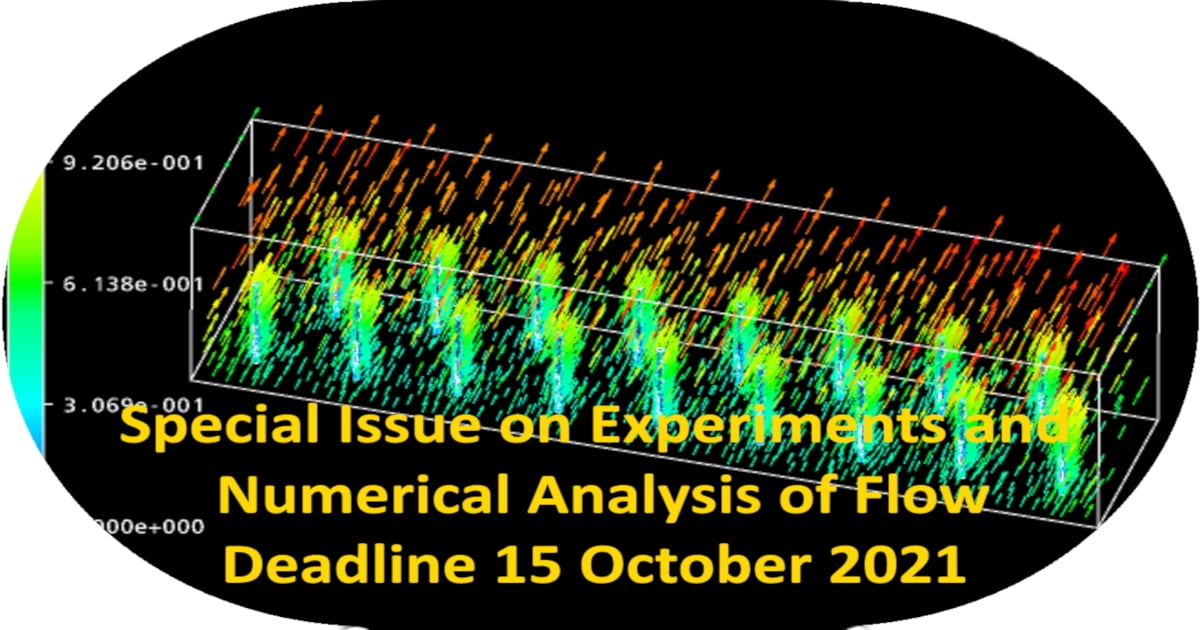Experiments and Numerical Analysis of Flow
A special issue of Journal of Marine Science and Engineering (ISSN 2077-1312). This special issue belongs to the section "Coastal Engineering".
Deadline for manuscript submissions: closed (15 January 2022) | Viewed by 22970

Special Issue Editor
Special Issue Information
Dear Colleagues,
Flow phenomena and the associated momentum transfer near the permeable bed are encountered in various fields (environmental hydraulics, geophysical fluid dynamics, and mechanical engineering, among others). Turbulence is found to be the primary mechanism of transport processes in most natural shear flows. The turbulent characteristics of flows are important in particle transport phenomena.
A thorough study of open channel flows is very significant for a wide range of applications, including restoration and enhancement of river aquatic systems. Additionally, the study of the impact of vegetation on turbulent flow in an open channel has particular importance. The presence of vegetation in rivers and open channel beds significantly influences velocity and depth flow.
This Special Issue aims to cover, without being limited to, the following areas: fluid mechanics; eco/environmental hydraulics; experimental techniques; advanced models in turbulence, heat transfer and mass transfer; sediment transport and morphodynamics in streams and rivers; vegetated flows; erosion processes; morphology and water quality; innovative management systems.
Dr. Evangelos Keramaris
Guest Editor
Manuscript Submission Information
Manuscripts should be submitted online at www.mdpi.com by registering and logging in to this website. Once you are registered, click here to go to the submission form. Manuscripts can be submitted until the deadline. All submissions that pass pre-check are peer-reviewed. Accepted papers will be published continuously in the journal (as soon as accepted) and will be listed together on the special issue website. Research articles, review articles as well as short communications are invited. For planned papers, a title and short abstract (about 100 words) can be sent to the Editorial Office for announcement on this website.
Submitted manuscripts should not have been published previously, nor be under consideration for publication elsewhere (except conference proceedings papers). All manuscripts are thoroughly refereed through a single-blind peer-review process. A guide for authors and other relevant information for submission of manuscripts is available on the Instructions for Authors page. Journal of Marine Science and Engineering is an international peer-reviewed open access monthly journal published by MDPI.
Please visit the Instructions for Authors page before submitting a manuscript. The Article Processing Charge (APC) for publication in this open access journal is 2600 CHF (Swiss Francs). Submitted papers should be well formatted and use good English. Authors may use MDPI's English editing service prior to publication or during author revisions.
Keywords
- experimental hydraulics
- computational fluid mechanics
- advanced models in turbulence
- heat transfer and mass transfer
- riverine systems
- sediment transport
Benefits of Publishing in a Special Issue
- Ease of navigation: Grouping papers by topic helps scholars navigate broad scope journals more efficiently.
- Greater discoverability: Special Issues support the reach and impact of scientific research. Articles in Special Issues are more discoverable and cited more frequently.
- Expansion of research network: Special Issues facilitate connections among authors, fostering scientific collaborations.
- External promotion: Articles in Special Issues are often promoted through the journal's social media, increasing their visibility.
- e-Book format: Special Issues with more than 10 articles can be published as dedicated e-books, ensuring wide and rapid dissemination.
Further information on MDPI's Special Issue policies can be found here.





